Key takeaways
- An EP (Extended Play) provides a concise music experience, allowing artists to share their evolving sound without the commitment of a full album.
- Email marketing is essential for directly connecting with fans, offering tailored messaging that creates a personal and engaging experience.
- Segmenting the audience in Mailchimp enhances communication by allowing artists to send personalized updates, making messages feel genuine and less like marketing.
- Analyzing Mailchimp results helps refine future campaigns by identifying what content resonates with fans, driving continuous improvement in engagement strategies.
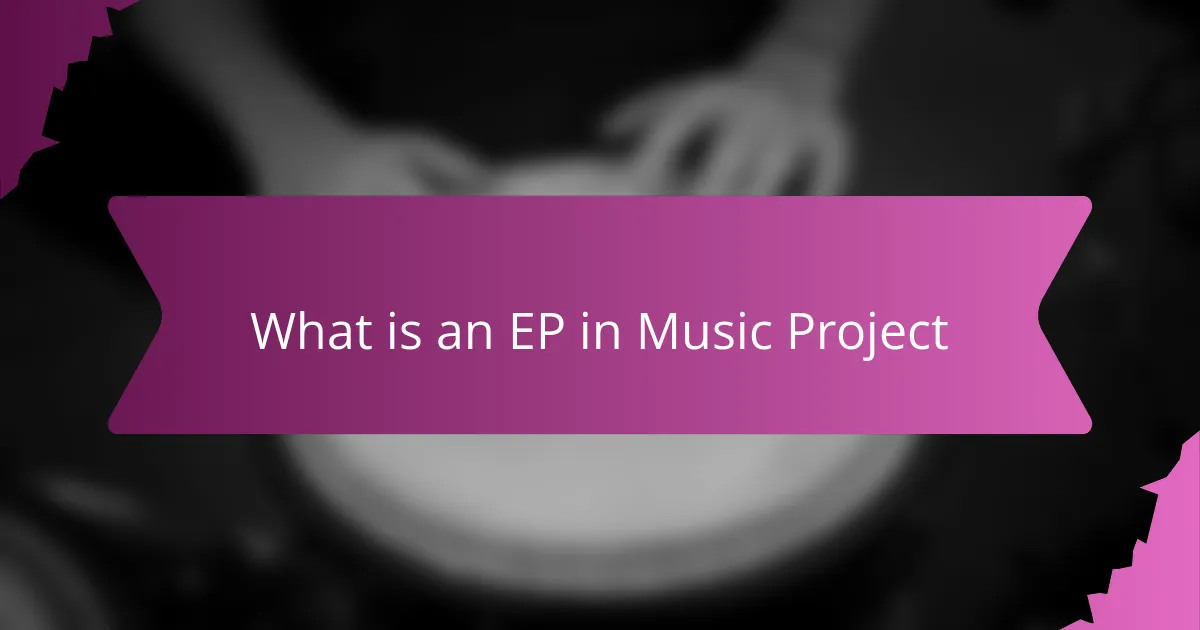
What is an EP in Music Project
An EP, or Extended Play, is a music release that’s longer than a single but shorter than a full album. I’ve always found EPs to be the sweet spot for artists—they showcase more than just a taste, yet don’t demand the commitment of a full album. When I first started working on music projects, understanding this helped me appreciate the EP as a powerful tool for storytelling and sharing my evolving sound.
Why choose an EP over an album? From my experience, an EP allows you to experiment without the pressure of creating a lengthy collection. It’s a snapshot of an artist’s vision at a particular moment, and for me, that made promoting it feel more personal and focused. I remember feeling like I was inviting listeners into a concise, curated musical experience rather than overwhelming them.
In the music world, an EP typically contains around three to six songs. This structure gave me the freedom to highlight key tracks while keeping the listener engaged throughout. Have you ever struggled to decide which songs to share? That’s exactly why the EP format resonates so much—it’s about quality and coherence over quantity.
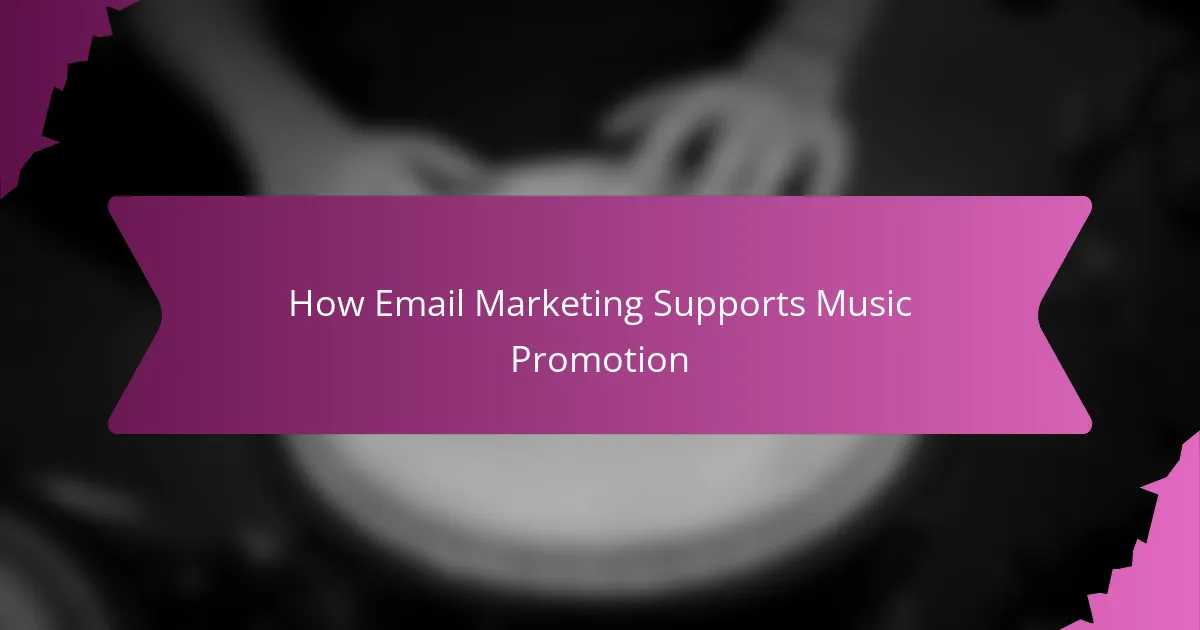
How Email Marketing Supports Music Promotion
Email marketing has been a game-changer for promoting my EP, mainly because it lets me connect directly with fans who actually want to hear my music. Unlike social media’s chaotic feed, emails land in inboxes where people are already open to listening and engaging. Have you noticed how personal it feels when you receive an email from an artist you love? That’s exactly the kind of connection I aimed to build with every Mailchimp campaign I sent.
What I appreciate most about using email is the control it gives me over the message. I could tailor announcements, sneak peeks, and release dates in a way that felt intimate and authentic, making fans feel like insiders rather than just followers. This approach didn’t just promote the music—it created a shared experience that made my listeners eager to hit play as soon as the EP dropped.
At times, I wondered if anyone would actually open my emails or if my efforts would be drowned out by the noise online. But seeing consistent engagement rates and hearing feedback from fans reminded me why email marketing is indispensable for musicians. It’s not just another tool; it’s a direct line to the people who keep my project alive.
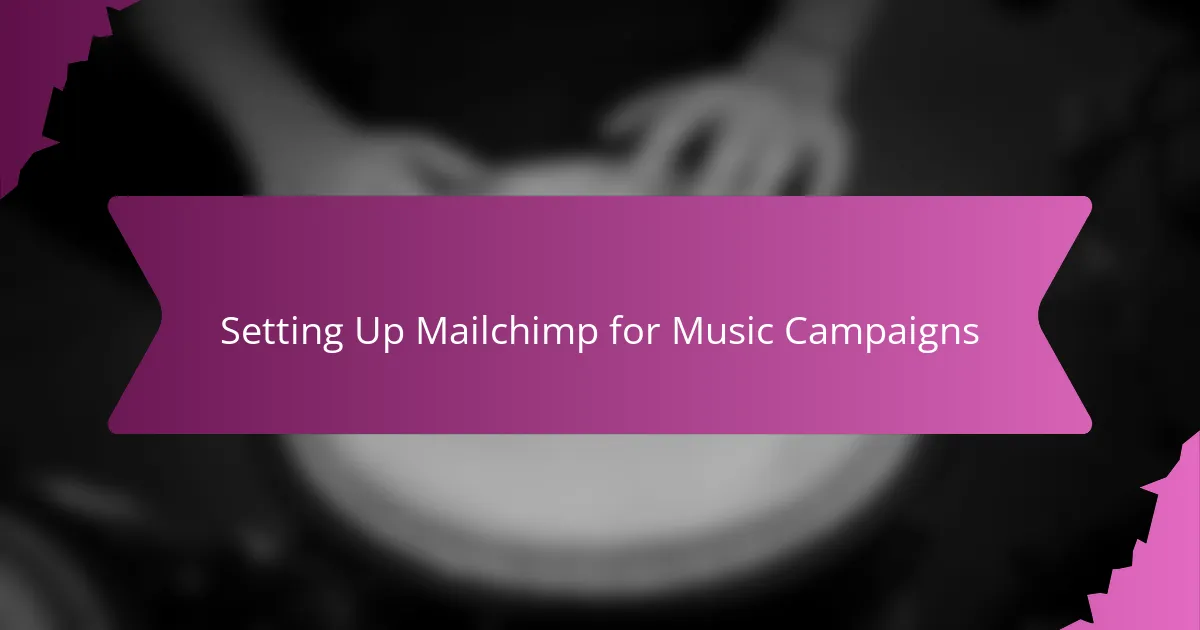
Setting Up Mailchimp for Music Campaigns
Setting up Mailchimp for music campaigns was surprisingly straightforward, but I quickly learned that the real work comes in customizing it to fit my style and my audience. Have you ever felt overwhelmed by all the options in a new tool? I did, especially with Mailchimp’s templates and automation features, but focusing on what felt genuine to my music helped me find the right balance. For example, I chose a clean, visually appealing template that highlighted my EP cover art without distracting from my message.
One feature that made a big difference for me was segmenting my email list based on fans’ engagement levels. It felt almost like having a conversation tailored to each listener—dedicated updates for the most eager fans and occasional gentle reminders for the casual followers. Setting up those segments in Mailchimp took some time, but seeing the boost in open rates reassured me that the effort was well worth it.
I also found myself experimenting with automation to schedule emails around key moments, like pre-release teasers and post-launch thank-yous. It relieved the stress of trying to remember every date and allowed me to stay connected consistently. Have you tried scheduling your emails ahead? I can tell you, that feeling of control and calm was priceless during a busy release period.
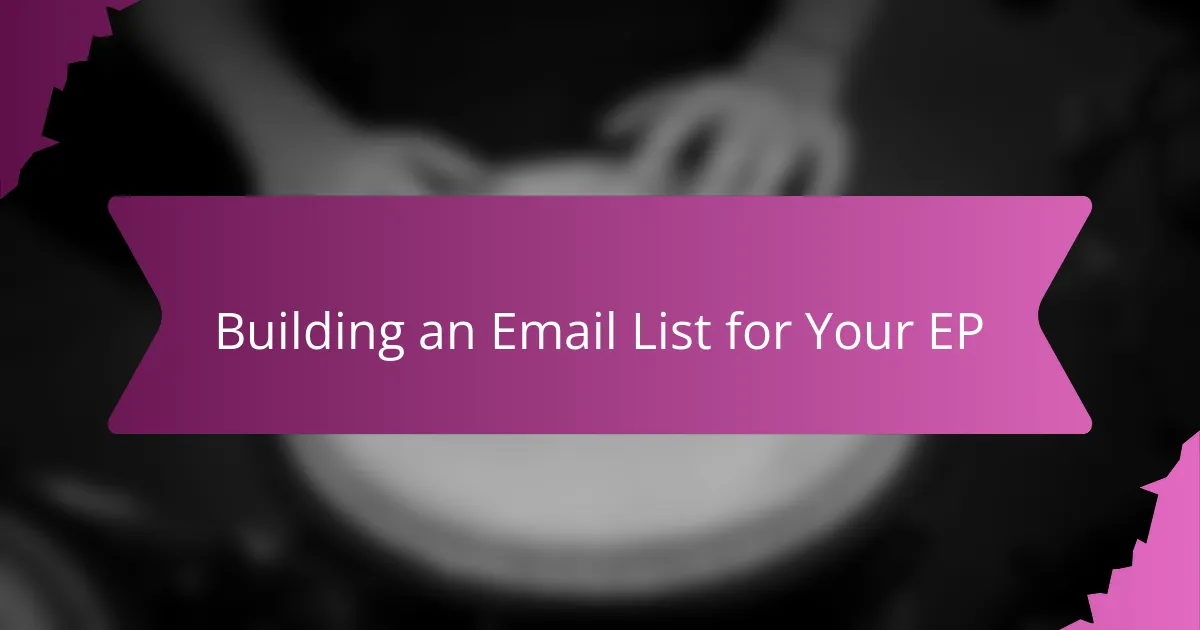
Building an Email List for Your EP
Building an email list felt like planting seeds for my EP’s success. I started by inviting friends, fans, and even strangers who showed interest at gigs or online. Have you ever noticed how a simple sign-up form can turn casual listeners into dedicated supporters? That small step created a foundation I knew I could nurture.
I quickly realized that a quality list mattered more than quantity. Sending updates to people who actually wanted to hear my music made every message feel like a meaningful conversation. It reminded me that building trust was more important than blasting out mass emails. How often do you open an email that feels personal? That’s the connection I aimed for every time.
One trick that helped me grow my list was offering exclusive content—like behind-the-scenes clips or early EP previews. Fans loved feeling like insiders, and I loved seeing the list grow naturally. Have you tried rewarding your listeners for signing up? From my experience, it turns a simple subscription into a shared journey.
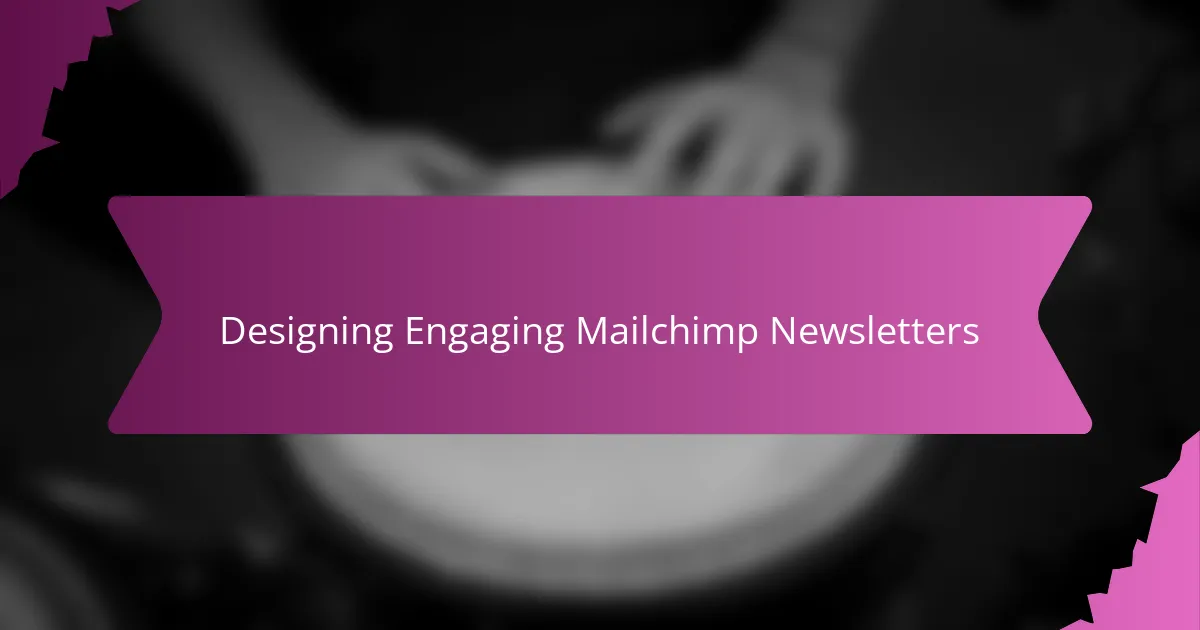
Designing Engaging Mailchimp Newsletters
When it came to designing my Mailchimp newsletters, I quickly realized that visual appeal mattered just as much as the message. I kept the layout clean and made sure my EP cover art took center stage—because first impressions count, especially in a crowded inbox. Have you ever scrolled past emails because they looked cluttered or generic? That’s why I focused on simplicity and striking imagery to grab attention right away.
Crafting compelling content was another game-changer. I experimented with short, punchy text paired with personal stories about the songs or the recording process. That approach made my newsletters feel like a conversation rather than a sales pitch. Do you think your fans want to hear salesy updates, or do they crave authenticity? From my experience, being genuine keeps readers clicking and coming back for more.
I also found that testing different subject lines and calls to action helped me understand what resonated most. Sometimes a playful question or a bold statement in the subject line was enough to boost open rates dramatically. It’s these little tweaks that made the difference between an email that got lost and one that sparked excitement for my EP. Have you ever been surprised by what type of email grabs your attention? I know I have, and that insight helped me refine my approach with each campaign.
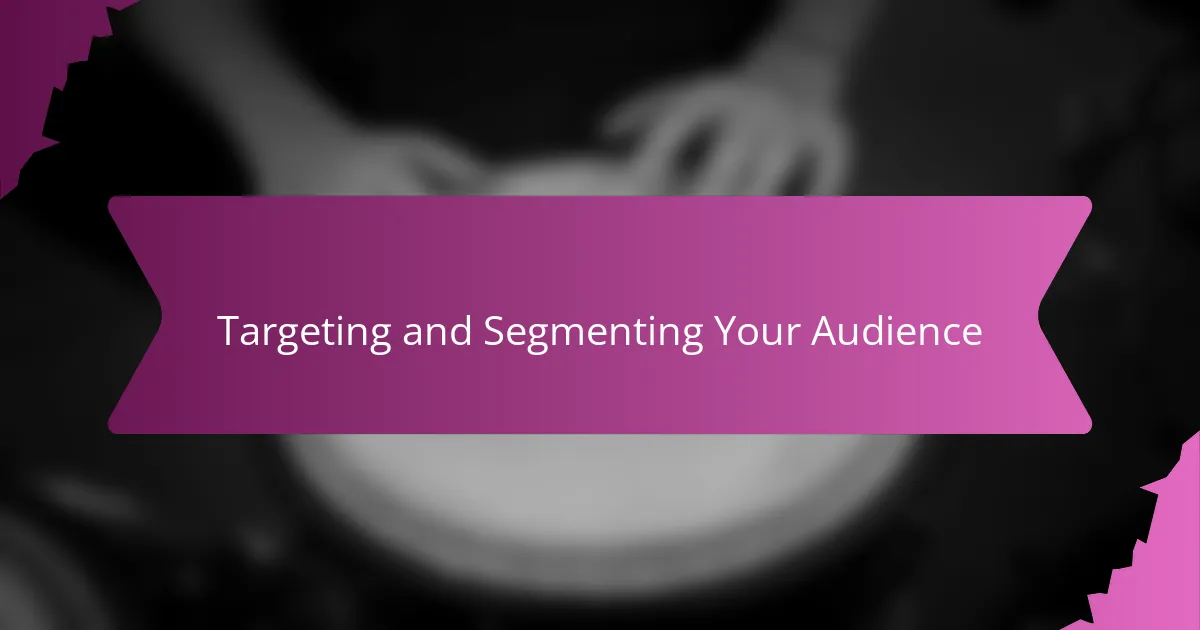
Targeting and Segmenting Your Audience
Segmenting your audience felt like unlocking a secret weapon for my EP promotion. When I divided my email list into groups—like superfans who engage with every update and casual listeners who only open occasionally—it became clear how different messages needed to match different levels of interest. Have you ever tried speaking to everyone the same way? From my experience, that rarely works.
Targeting specific segments let me send tailored updates that actually resonated. For example, I shared exclusive behind-the-scenes content with my most engaged followers, while casual fans received simple launch reminders. That personal touch made my emails feel less like marketing and more like genuine conversations. Didn’t it always feel better when someone “gets” you?
I found that refining these segments over time was key. As my audience grew, I kept learning who responded best to what, tweaking my lists accordingly. It was like tuning an instrument—small adjustments made all the difference in how well my messages hit home. Have you noticed how even small changes in who you talk to can change the whole response? That was definitely true for me.
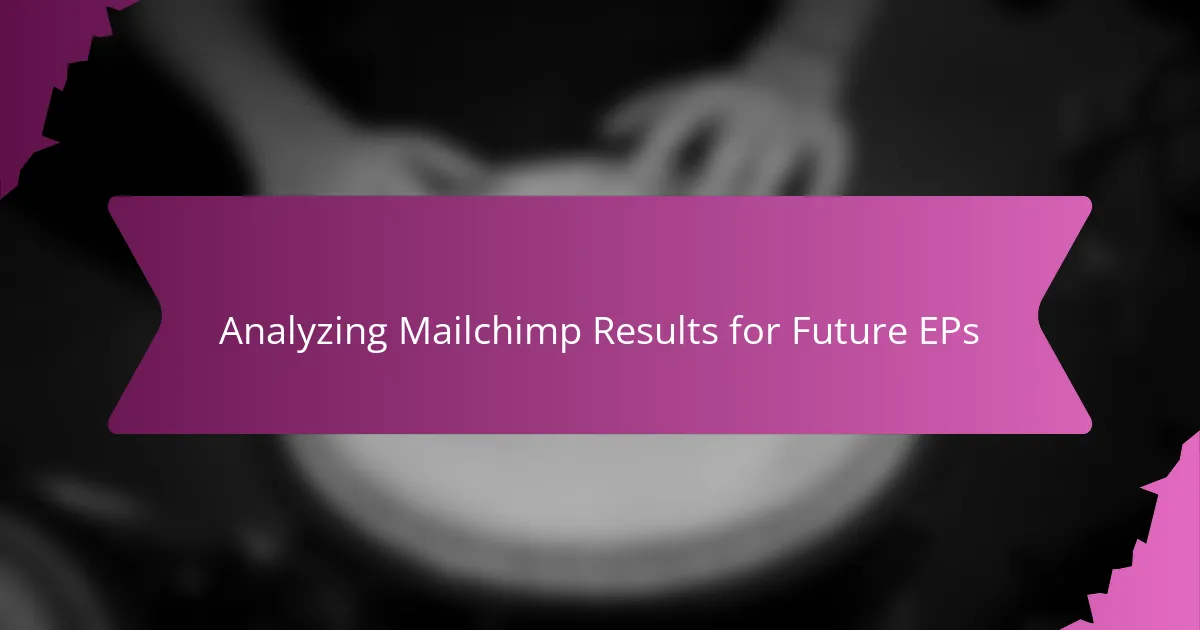
Analyzing Mailchimp Results for Future EPs
Analyzing Mailchimp results became my compass for planning future EP promotions. I uncovered patterns in open rates and click behavior that told me which parts of my message truly connected with fans—and which fell flat. Have you ever been surprised by which email subject line or content your listeners actually engage with? For me, those insights shaped everything from timing to the tone of my next outreach.
One thing I noticed was how certain segments responded differently, which made me think deeply about personalization. Sending a generic email felt like talking into the void, but tailoring updates based on past behavior turned my messages into meaningful conversations. It reminded me that behind every open or click is a real person, and honoring that connection makes all the difference. Does that personal touch resonate with your experience too?
Looking ahead, I’m excited to experiment further by testing new content formats and adjusting send schedules based on these results. It’s like having a direct line to my audience’s preferences—and that feedback loop keeps me evolving as both an artist and a promoter. I ask myself often: what can I learn next to make each EP launch even more impactful? The data from Mailchimp gives me clues I can’t afford to ignore.